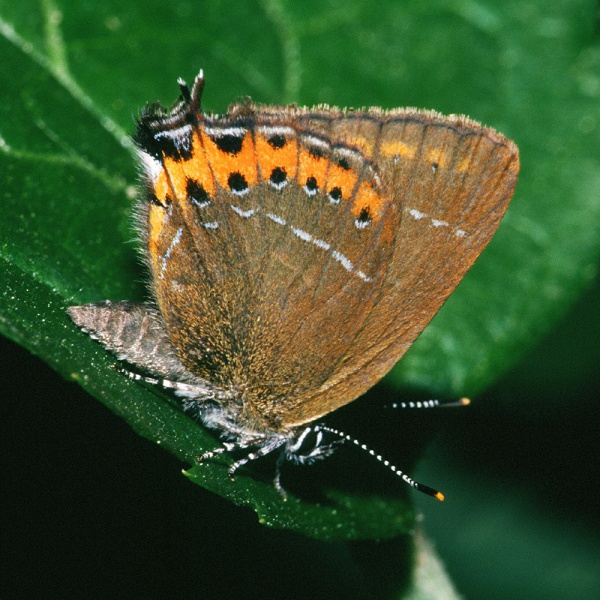Facts About Black hairstreak
The black hairstreak butterfly, a member of the Lycaenidae family, is native to Europe and parts of Asia. Its range extends from Scandinavia to Ukraine, and as far east as Mongolia, Korea, and Japan. According to the International Union for Conservation of Nature (IUCN), this species is stable and listed as of least concern.
In terms of appearance, male black hairstreaks have a few spots near their tails, while females exhibit a halfband in the same area and sometimes a brick-red spot. These butterflies are distributed across Central and Southern Europe, from the Atlantic coast to Asia, though they are absent from North Africa and likely Japan.
In Great Britain, black hairstreaks are rare and mostly found in the south and east Midlands. The largest breeding colony in Britain is located in Ham Home-cum-Hamgreen Woods in Buckinghamshire. Since their first discovery in 1828, around 90 colonies have been identified, but attempts to introduce them to southern England have largely been unsuccessful. However, in June 2018, a significant population was discovered in East Sussex.
Across continental Europe, black hairstreaks inhabit most countries, except for the Mediterranean coastal regions. Although widespread, they rely on specific habitats and are experiencing declines in the eastern parts of the continent. In Scandinavia, they can be found in southern Finland and Sweden, but are extinct in Denmark.
The life cycle of the black hairstreak begins with laying eggs on young blackthorn growth. The caterpillar hibernates in this stage, feeds on flower buds in the spring, then pupates in June. The adult butterflies emerge from late June to mid-July.

 Ireland
Ireland